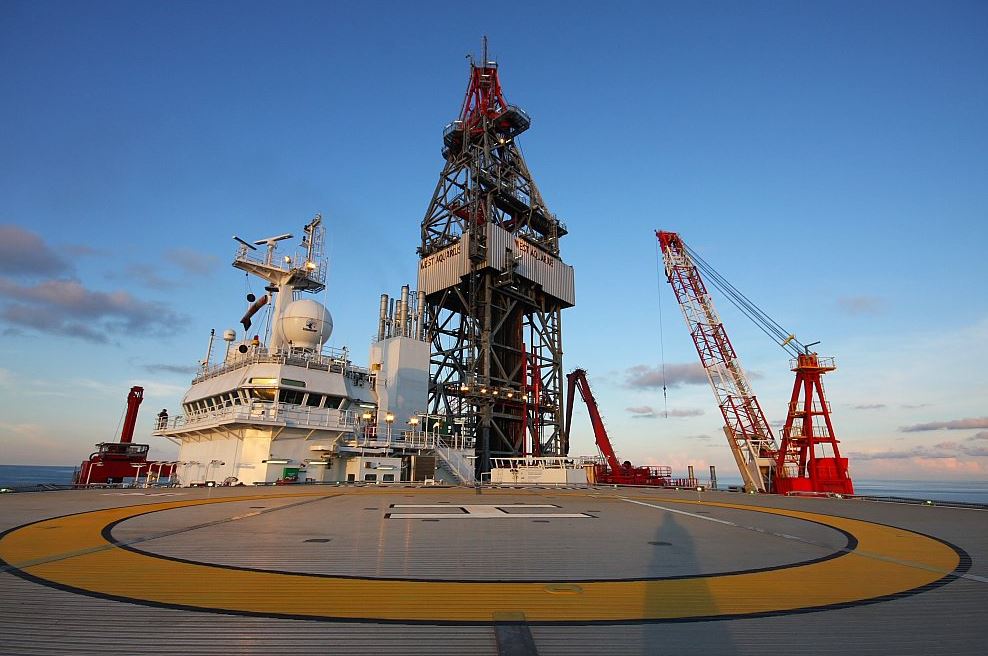A spill of 136,000 litres of synthetic drilling mud has been reported off the coast of Nova Scotia.

According to the Canada-Nova Scotia Offshore Petroleum Board, the “unauthorized discharge” of synthetic-based drilling mud from British Petroleum Canada’s West Aquarius Drilling Unit was reported on Friday.
West Aquarius is currently located about 330 kilometres off the coast of Halifax.
READ MORE: BP Canada gets approval to drill a well off Nova Scotia coast
Drilling has since been stopped as the source of the discharge is investigated. The board has launched a remote-operated vehicle to help determine the cause.
The preliminary investigation indicates the spill was from piping that forms part of the mud system approximately 30 metres below sea level.
“Drilling of the well will not resume until BP Canada receives approval from the (board) that it may proceed,” the Canada-Nova Scotia Offshore Petroleum Board said in a statement on Friday.
READ MORE: Protesters plan ‘Unwelcoming Party’ after BP Canada permitted to prepare for drilling off N.S.
Spokesperson Stacy O’Rourke says staff members have been monitoring the situation since it was first reported earlier Friday. She says the Canadian Coast Guard was also notified.
- Enter at your own risk: New home security camera aims paintballs at intruders
- High benzene levels detected near Ontario First Nation for weeks, residents report sickness
- Beijing orders Apple to pull WhatsApp, Threads from its China app store
- Boston Dynamics unveils ‘creepy’ new fully electric humanoid robot
“Synthetic based mud is a heavy, dense fluid used during drilling to lubricate the drill pipe and overbalance reservoir pressure,” the statement reads. “Because of its weight, the mud sinks rapidly in the water column to the sea floor. The synthetic based oil used in SBM is of low toxicity. Because of this, effects of SBM spills are typically limited to the area immediately surrounding the well site and are associated with physical smothering of the seabed due to coverage by the mud.”
Dating back to 1999, the Canada-Nova Scotia Offshore Petroleum Board has recorded 16 spills of synthetic drilling mud. Thirteen of those spills were less than 150 litres. The most significant, reported in August 2004, was 354,000 litres.
In a statement to Global News, BP Canada confirmed there was a synthetic drilling mud discharge on Friday, and that they take the incident “very seriously.” The company does not know how long the substance was leaking before it was discovered and reported.
Stephen Thomas, the Ecology Action Centre’s energy campaign co-ordinator, calls the spill “extremely worrying,” and “inexcusable.”
“Coastal communities have been concerned that something like this, or worse, would happen,” Thomas told Global News. “We need a better regulatory oversight system here in the offshore, in Nova Scotia and Newfoundland, and I think it’s the right step to stop drilling until we get this sorted out.”
NDP Energy spokesperson Dave Wilson has also responded to the spill.
“(Friday’s) news about a spill off our coast reinforces the concerns that have been raised by fishers, scientists, and environmentalists that we need to be more rigorous to protect offshore environment,” Wilson said in a statement.
The Canada-Nova Scotia Offshore Petroleum Board gave BP Canada the go-ahead to drill a well off the coast of Nova Scotia back in April.
“Unwelcoming parties” were held in Halifax in March by the Nova Scotia branch of the Council of Canadians Acting for Social Justice, with hopes of making it clear that BP Canada was not welcome in the province.




Comments